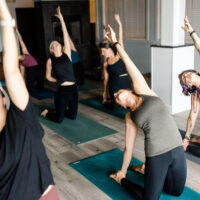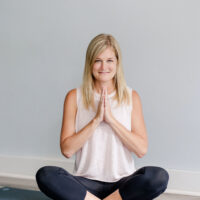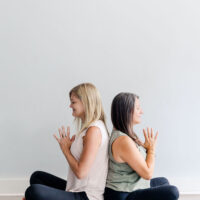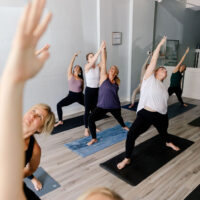5 Elements of Yoga that Help During Postpartum
5 Elements of Yoga That Help During Postpartum
Postpartum is considered the 4th trimester of pregnancy. The sudden changes in hormone levels, the process of recovering from birth plus the demands of taking care of a newborn can bring about challenges during what people perceive should be a beautiful time of life.
While bringing home and spending time with your precious newborn is filled with moments to treasure, it’s important to understand and be realistic about the not so glamorous things that arise throughout the postpartum period – major hormonal changes, recovery from childbirth, sleep deprivation, loneliness, worry, neck, shoulder and back aches and pains, etc.
We find when women are equipped with the knowledge of what could arise during this time coupled with tools to cope, postpartum can be a much more manageable and enjoyable phase – not just for mom and baby but also for everyone else in the household!
So why yoga to help navigate postpartum times? Yoga’s focus on re-balancing the mind, energy and body can help you better self-regulate and maintain a greater sense of acceptance, presence and peace as you ride the highs and lows of postpartum. In addition, the intensity of a yoga practice can be dialed back quite a bit without losing the many benefits, making this a great way to get back into physical movement while the body is still finding its new normal.

Here are the 5 elements that can significantly help women during postpartum:
- Breath – just engaging in a slow, mindful breath practice can do wonders for your mind and body. In fact, we can’t say enough about the benefits of your breath. From improved circulation to help aid healing, to improving your sleep quality to keeping anxiety at bay, there is so much power in remembering to “just breathe.” Remember, each time your baby cries, your nervous system instinctually kicks into a panic mode. Learning to maintain a slow, calm breath anytime you feel yourself moving away from a peaceful state can help your nervous system regulate and keep stress-related hormones at bay.
Tip: use a 5 second inhale and exhale, counting up to 5 as you breathe in and down from 5 as you breathe out. This is said to be the length of breath that has the greatest impact on health and healing.
- Presence – this time goes by quickly and before you know it, you have a crawler, walker and talker! In truth, you want to enjoy as many moments as possible and yoga teaches us to let go of distractions and embrace the present moment as it is – even the difficult ones. Learning to drop the load of cares and worries and give yourself space to enjoy the one on one time you have with your little one can have a profound impact on your mental state throughout this time.
Tip: use the mantra “be here now” when you find yourself distracted or swirling in thoughts, expectations and/or concerns.
- Stretching – shoulders, back, wrists, oh my! Nursing, holding and carrying your new bundle of joy can take a toll on your posture and body. This can lead to back, shoulder and wrist tension. There are great yoga-inspired stretches to help alleviate aches and maintain good posture.
Tip: once you get the little one down for the night, do a few stretches to work out the kinks from the day. This chest and shoulder opening stretch is one of our favorites and it’s an easy one to do on your bedroom floor.

- Strengthening – pregnancy and childbirth does a number on your core, spine, hips and pelvic floor. Putting these areas back to together with mindful strengthening exercises will help prevent issues further down the line such as diastasis, incontinence and nagging pain. A strong core in particular helps you restore a sense of confidence in your body and a feeling of physically getting back to “normal”.
Tip: Do toe taps lying on your back to help restore your core. Lie on your back with your knees bent and your feet lifted in line with your knees. Slightly tuck your tailbone so your lower back is connected to the ground. Tap one set of toes down to the ground at a time and then return to the lifted position. Repeat with the opposite leg. Continue for 8-10 rounds remembering to use your core to do the lifting.
- Community – while it may not be possible initially to take a yoga class outside of your home, we highly recommended doing it once the time is right. We used to raise children in villages (because it does take a village!). Now, it’s common for new moms to feel isolated, lonely and overwhelmed. Getting out of the house and around other people, especially other moms, can be therapeutic. If you can find a class dedicated specifically to postpartum yoga, that is ideal. Unfortunately these are few and far between, so as an alternative, look for a studio or class focused on delivering a well-balanced yoga practice that includes mindfulness and breath.
Tip: some studios have childcare alongside of classes – a great option to help make going to yoga easier!






